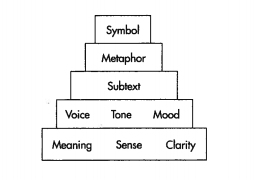If you’re looking for a powerful motivator to start writing better, consider this tale of two 19th century scientists.
In 1859, Charles Darwin published On the Origin of Species and made history. Darwin’s ideas on how humans evolve was quickly established as a solid scientific theory.
Darwin’s contributions earned him prestige during his lifetime. And more than a century later, his investigations into natural selection still influence modern debates about evolution.
But here’s the thing: Darwin wasn’t the only scientist who came up with the theory of evolution.
Alfred Russel Wallace, another British naturalist, co-discovered the theory with Darwin; the pair published a joint paper on the topic, and that work triggered Darwin’s On the Origin of Species.
So, why is Darwin still celebrated today and Wallace has faded into obscurity?
Clear, concise writing had a lot to do with it.
Because Darwin was the better writer, he was able to better present his ideas. And this skill earned Darwin’s theories more attention, according to this episode of Stuff to Blow Your Mind. It’s easy to imagine that because Darwin’s writer was clearer and more concise, he was able to communicate his theories easily.
Now if Darwin’s writing skills earned him a place in the history books, what could it do for your business or career?
It’s exactly why clear, concise writing is the pillar of an effective content strategy. No matter the medium, writing that holds your reader’s attention and convey your message clearly, has a better chance of cutting through the noise to connect with your community.
There are several practical tips for writing better. But it helps if they’re anchored in a solid foundation, one that’s based on two critical elements of effective writing: meaning and sense.
Why Writing Well Matters in the Digital Age
But is writing well still relevant in the 21st century?
It’s more important than ever. These days readers have an avalanche of content competing for their attention.
From social networks to email to instant messages, we’re constantly being bombarded by some type of content.
Consider these numbers from Internet Live Stats:
- 2,3 million blog posts are written each day
- 26 million photos will be uploaded to Instagram
- 2.8 million emails are sent each SECOND
With so much content available, the last thing you want to do is make it hard for your audience to engage with your content.
To captivate your reader and win their attention, you need to make your purpose clear: they should know exactly why they’re reading your email, social media post, or blog.
How to Write Better: Three Simple Tips
Writing clearly sounds simply enough. But if you want to write better, how do you start?
For starters, like with most skills, getting it just right takes practice. And helpful to accept writing better is a journey of learning that never needs to end.
The path to better writing begins with the basics: determining what it is you want to say and expressing that clearly.
I’m always searching for ways to improve my writing; I’m not an expert, but I’m passionate about the power of clear, compelling writing.
Here’s three tips to get that right.
1. Figure out What You’re Trying to Say
In 1946, George Orwell was deeply distressed. Society was crumbling all around him and bad writing was at the centre of the decay.

Orwell poured this despair into his essay, Politics and English Language.
The 1984 author was unhappy about several things, but he mainly targeted politicians, especially their tendency to use metaphors or words that held little meaning.
To overcome this challenge, Orwell provides practical tips we can use today:
- What are you trying to say?
- What words will express what you’re trying to say?
- Have you said anything that is “avoidably ugly”?
Before you begin writing, consider the goal of your article. What is the point? Who is the audience? These questions may help guide your piece.
He ends the essay with what has become known as Orwell’s six rules for great writing:
- Never use a metaphor, simile, or other figure of speech which you are used to seeing in print.
- Never use a long word where a short one will do.
- If it is possible to cut a word out, always cut it out.
- Never use the passive where you can use the active.
- Never use a foreign phrase, a scientific word, or a jargon word if you can think of an everyday English equivalent.
- Break any of these rules sooner than say anything outright barbarous.
If you bookmark these tips, you’ll have solid advice for improving your writing.
2. Make Your Meaning Clear
Once you’ve determined what it is you want to say, focus on making that meaning clear. Next, ensure it all makes sense to your reader.
That was the message from Frank Conroy, a director of the Writer’s Workshop at the University of Iowa, the oldest creative writing programme for writers in the United States.
Conroy developed a writing pyramid: the goal was to give writing students a foundation on which to build their creative writing skills.

You’ll see although there are a variety of techniques available to creative writers, meaning and sense ground the pyramid.
As a writer, you must mean what you say, urges Conroy. When it comes to sense, the reader must “understand the text to enter it”. Put another way, your reader can only connect with your message if it makes sense.
A good technique is to read each sentence carefully to judge whether or not it meet Conroy’s minimum criteria. Is your meaning clear? And does it make sense?
3. Eliminate Jargon
When it comes to clear writing, reducing jargon, in favour of easily understood terms, is a great place to start.
Now let’s face it, if Orwell were still around today, many corporate buzzwords would qualify as “unavoidably ugly”.
For instance, if your headline contains technical jargon, many readers may scroll right by. Even worse, it might not be clear, even to your target audience, what exactly you’re trying to say.
In its style guide Stanford Engineering helps engineers convey complex topics to their readers.
Here’s an example:
“Before: The Acme Corporation continues to work on the cell phone case configuration revision project.
“After: The Acme Corporation is developing a redesigned cell phone case.”
Of course, avoiding jargon doesn’t mean cutting out technical terms your audience will understand.
Clear writing is easy to read but, sometimes, it feels impossible to create. hard. Still, having it as a goal can only make your writing better. I hope these strategies will help you write better content, so you can create posts that connect with your readers. Start small and with a focus on meaning and sense.
Once your strip your text of words that cloud your meaning, you’ll find your sentences are automatically more clear and concise. Because your writing is easier to understand, your arguments become more persuasive.
In your bid to writing better, it helps to read your article with these questions in mind:
- What am I trying to say?
- Is my meaning clear?
- Does it make sense?
- Is my article free of complicated jargon?
If you’re like me, you see writing as a craft, one that requires a commitment to lifelong learning. I’m always looking for new ways to write better and here’s some of the processes I use for writing practice.
Featured image: Photo by Matthew LeJune on Unsplash
